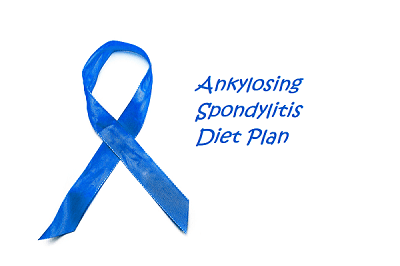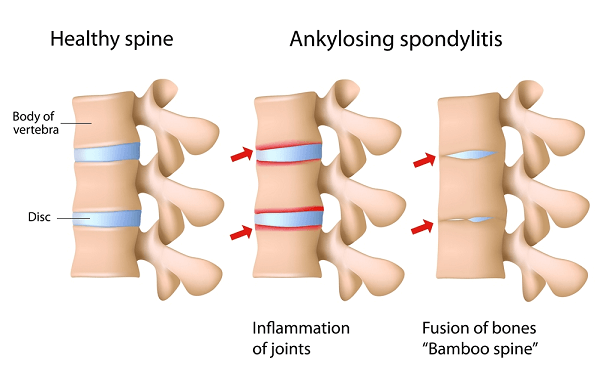Ankylosing Spondylitis: Review Methods Of Treatment

Treatment of ankylosing spondylitis involves softening the pain and stiffness, reducing inflammation, preventing complications and maintaining the ability to perform daily activities. Early diagnosis and prompt treatment can help relieve pain, stiffness, inflammation and prevent deformation.
Discuss with your doctor which treatment is most applicable to you. It is also recommended to consult a rheumatologist to confirm the diagnosis or make treatment program. Your physician may engage in moderate cases of the disease. You may also be sent to the rheumatologist, orthopedist or a psychologist.
Initial actions
The initial stages of treatment of ankylosing spondylitis include:
- Education that you were ready to consequences of disease progression and were able to minimize new complications.
- Conditioning exercise to maintain mobility and control pain. People who regularly engaged in at least feel the pain and stiffness, compared with less active people.
- NSAIDs (NSPVP), used to alleviate pain, stiffness and reduce inflammation. For some people more effective daily intake NSPVP than in periods of exacerbation of symptoms. Talk to your doctor about the possibility of NSPVP with ankylosing spondylitis, discussing the dose and frequency of use of these drugs.
- Physiotherapy – To maintain the proper biomechanics of the body and breathing exercises to improve lung function. The physiotherapist will also teach you the implementation of hot and cold wraps to reduce pain and stiffness. Thermal procedure has a relaxing effect and softens the pain, and the application of cold reduces inflammation.
- Auxiliary devices, such as reed or Walkers are allowing maintaining physical activity, reducing stress on joints.
- Alternative therapies, such as Yoga and Acupuncture contribute to reducing pain and improving general well-being.
Subsequent treatment
If initial treatments soften the symptoms of ankylosing spondylitis inadequate, and your condition deteriorates, you can continue treatment using the following methods:
- Conditioning exercise to maintain mobility and control pain. People who regularly engaged in at least feel the pain and stiffness, compared with less active people. In addition to conditioning exercise for patients with ankylosing spondylarthritis also useful walking and swimming. Some people continue to engage in sports. Discuss with your doctor or physical therapist what types of physical activity will be best for you.
- Medicines. To reduce pain and inflammation of the doctors usually prescribe non-steroidal anti-inflammatory drugs (NSPVP). If necessary, you can use drugs more powerful action.
- Corticosteroids, such as hormones produced in the body, help reduce inflammation. Intra-articular injections of corticosteroids may be effective in eliminating pain and stiffness in the joints.
- Basic, antirheumatic drugs that modify the course of the disease (BPRP) can reduce pain in the joints, except joints of the spine and pelvis. The most thoroughly studied BPRP, used in ankylosing spondylitis – sulfasalazine, a combination of aspirin and an antibiotic, is administered orally. It is also often used in rheumatoid arthritis. For some people, more effective drug methotrexate, soothing pain in the joints, except joints of the spine.
- Biological agents or anti-TNF-alpha antibodies reduce inflammation by inhibiting the synthesis of a special protein that blocks tumor necrosis factor (TNF) that causes inflammation.
- Physiotherapy – To maintain the proper biomechanics of the body, and breathing exercises to increase lung volume. The physiotherapist will also teach you the implementation of hot and cold wraps to reduce pain and stiffness. Thermal procedure has a relaxing effect and softens the pain, and the application of cold reduces inflammation.
- Adaptive devices — reed or Walkers are allowing maintaining physical activity, reducing stress on joints.
- Alternative therapies, such as Yoga and Acupuncture to contribute to reducing pain and improving general well-being.
Your doctor will appoint the appropriate treatment to the extent of complications in ankylosing spondylitis. For example, for the treatment Irita be prescribed medications to help curb inflammation, such as corticosteroids, or eye drops, causing the expansion of the pupil.
Methods of treatment in severe cases
In severe joint damage due to ankylosing spondylitis may require surgery. Typical is the operation of a hip replacement. The operation is to replace the joints of the spine in patients with ankylosing spondylarthritis done very rarely. In the case of weakening the two cervical vertebrae and signs of pressure on the spinal cord, such as numbness and weakness in hands or arms, an operation on the fusion of two vertebrae. In extreme and very rare cases, an operation to equalize severely curved spine, but this operation is risky and not always able to restore motor function.
Because ankylosing spondylitis – a chronic disease, treatment can be complementary to non-traditional methods of therapy that will help reduce the symptoms, control pain and improve quality of life. Alternative treatments include a variety of techniques, which can be used as a complement to traditional medicine, or instead. The most common non-traditional methods of treatment are yoga and acupuncture.
Even Just noticeable symptoms, you should undergo an annual examination by a rheumatologist in order to control and treatment of complications associated with the disease. People with damage to the hip joint and possibly those who first developed symptoms in early adulthood are highly vulnerable to severe complications due to ankylosing spondylitis.
Facebook
Google+
Twitter
Pinterest
Reddit
StumbleUpon





